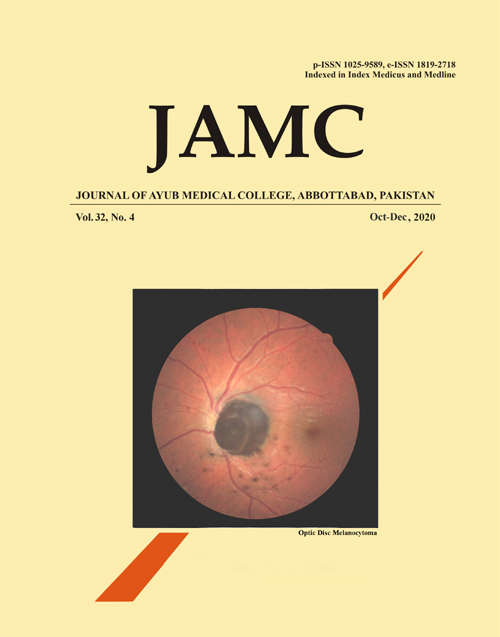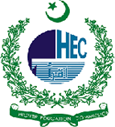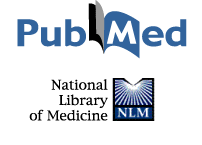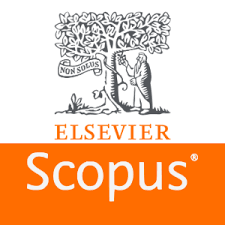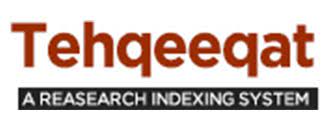DENTAL CHARACTERISTICS OF PATIENTS SUFFERING FROM TEMPOROMANDIBULAR DISORDERS
Abstract
Background: The role of malocclusion in the aetiology of TMDs has been discussed extensively in literature, however, the varied results from different studies have made it difficult to reach a consensus. The objective of this study was to determine the association of dental characteristics and temporomandibular disorders (TMDs). Method: This case-control study involved a total of 266 patients who were equally divided into 2 groups (TMD/Non-TMD) based on the score obtained from the Fonseca's questionnaire. Dental characteristics such as class of malocclusion, overjet, overbite, crossbite, and crowding were assessed. The Chi-square test was used to determine an association between each dental characteristic and TMD. Odds ratios were calculated using simple and multiple logistic regression. Results: Significant associations were found between crowding, crossbites, and molar relationships in males. Simple logistic regression showed significant associations for class II malocclusion (OR=0.56, p=0.024) and crowding (OR=0.35, p<0.001) with TMD. Multiple logistic regression showed significant associations for crowding (p<0.001) and class III malocclusion (p=0.002). Conclusion: Male patients with dental characteristics such as improper molar relationships, crossbites, and crowding should seek orthodontic treatment to prevent the onset of TMDs. Higher odds of TMD were found in patients with Angle's class III malocclusion.
Keywords: Temporomandibular Joint Disorders; Malocclusion; CrowdingReferences
Almasan OC, Baciut M, Almasan HA, Bran S, Lascu L, Lancu M, et al. Skeletal pattern in subjects with temporomandibular joint disorders. Arch Med Sci 2013;9(1):118-26.
Gesch D, Bernhardt O, Mock F, John U, Kocher T, Alte D. Association of malocclusion and functional occlusion with subjective symptoms of TMD in adults: results of the study of health in Pomerania (SHIP). Angle Orthod 2005;75(2):183-90.
Mohlin B, Axelsson S, Paulin G, Pietila T, Bondemark L, Brattstrom V, et al. TMD in relation to orthodontics (review article). Angle Orthod 2007;77(3):542-8.
Kim MR, Graber TM, Viana MA. Orthodontics and temporomandibular disorders: a meta-analysis. Am J Orthod Dentofacial Orthop 2000;121(5):438-46.
Mohlin BO, Derredurer K, Riley R, Kingldon A, Koneales P. Malocclusion and temporomandibular disorder: a comparison of adolescents with moderate to severe dysfunction with those without signs and symptoms of temporomandibular disorders and their further development to 30 years of age. Angle Orthod 2004;74(3):319-24.
Schmid-Schwap M, Bristela M, Kundi M, Peihslinger E. Sex differences in patients with temporomandibular disorders. J Orofac Pain. 2013;27(1):42-50.
Proffit WR, Fields HW, Sarver DM. Contemporary Orthodontics. 6th Ed. St. Louis: Mosby; 2018.
Fonseca MD, Bonfate G, Valle AL, Freitas SFT. Diagnosis by anamnesis of craniomandibular dysfunction. Rev Gaucha Odontol 1994;4(1):23-32.
Thilander B, Rubio G, Pena L, Mayorga C. Prevalence of temporomandibular dysfunction and its association in children and adolescents: an epidemiological study related to specified stages of dental development. Angle Orthod 2002;72(2):146-54.
Luther F. TMD and occlusion part II. Damned if we don't? Functional occlusal problems: TMD epidemiology in a wider context. Br Dent J 2007;202:38-9.
Manfredini D, Perinetti G, Nardinia LG. Dental malocclusion is not related to temporomandibular joint clicking; a logistic regression analysis in a patient population. Angle Orthod 2014;84(2):310-5.
Rodrigues-Bigaton D, de Castro EM, Pires PF. Factor and Rasch analysis of the Fonseca anamnestic index for the diagnosis of myogenous temporomandibular disorder. Braz J Phys Ther 2017;21(2):120-6.
Karthik R, Hafila MIF, Saravanan C, Vivek N, Priyadarsini P, Ashwath B. Assessing prevalence of temporomandibular disorders among university students: a questionnaire study. J Int Soc Prev Community Dent 2017;7(Suppl 1):24-9.
Nomura K, Vitti M, de Oliveira AS, Chaves TC, Semprini M, Siessere S, et al. Use of Fonseca's questionnaire to assess the prevalence and severity of temporomandibular disorders in Brazilian dental undergraduates. Braz Dent J 2007;18(2):163-7.
Bagis B, Ayaz EA, Turgut S, Durkan R, Ozcan M. Gender difference in prevalence of signs and symptoms of temporomandibular joint disorders: a retrospective study on 243 consecutive patients. In J Med Sci 2012;9(7):539-44.
Ishfaq M, Bangash TH, Munim A. Associated features of temporomandibular pain dysfunction syndrome. J Postgrad Med Inst 2007;21:178-82.
Miyake R, Ohkubo R, Takehara J, Morita M. Oral parafunctions and associations of symptoms of temporomandibular disorders in Japanese university students. J Oral Rehabil 2004;31(6):518-23.
Okeson JP. Management of temporomandibular disorders and occlusion. 7th Ed. St. Louis: Mosby;2013.
Egermark I, Magnusson T, Carlsson GE. A 20-year follow-up of signs and symptoms of temporomandibular disorders and malocclusion in subjects with and without orthodontic treatment in childhood. Angle Orthod 2003;73(2):109-15.
Graber LW, Vanarsdall RL, Vig KW, Huang GJ. Orthodontics: Current Principles and Techniques. St. Louis, Missouri: Elsevier Health Sciences; 2017.
Bourzgui F, Sebbar M, Nadour A, Hamza M. Prevalence of temporomandibular dysfunction in orthodontic treatment. Int Orthod 2010;8(4):386-98.
Marklund S, Wänman A. Risk factors associated with incidence and persistence of signs and symptoms of temporomandibular disorders. Acta Odontol Scand 2010;68(5):289-99.
Sonnesen L, Svensson P. Temporomandibular disorders and psychological status in adult patients with a deep bite. Eur J Orthod 2008;30(6):621-9.
Marangoni AF, Leal de Gody CH, Biasotto-Gonzalez DA, Alfaya TA, Fernandes KPS, Mesquita-Ferrari RA, et al. Assessment of type of bite and vertical dimension of occlusion in children and adolescents with temporomandibular disorder. J Bodyw Mov Ther 2013;18(3):435-40.
Downloads
Published
How to Cite
Issue
Section
License
Journal of Ayub Medical College, Abbottabad is an OPEN ACCESS JOURNAL which means that all content is FREELY available without charge to all users whether registered with the journal or not. The work published by J Ayub Med Coll Abbottabad is licensed and distributed under the creative commons License CC BY ND Attribution-NoDerivs. Material printed in this journal is OPEN to access, and are FREE for use in academic and research work with proper citation. J Ayub Med Coll Abbottabad accepts only original material for publication with the understanding that except for abstracts, no part of the data has been published or will be submitted for publication elsewhere before appearing in J Ayub Med Coll Abbottabad. The Editorial Board of J Ayub Med Coll Abbottabad makes every effort to ensure the accuracy and authenticity of material printed in J Ayub Med Coll Abbottabad. However, conclusions and statements expressed are views of the authors and do not reflect the opinion/policy of J Ayub Med Coll Abbottabad or the Editorial Board.
USERS are allowed to read, download, copy, distribute, print, search, or link to the full texts of the articles, or use them for any other lawful purpose, without asking prior permission from the publisher or the author. This is in accordance with the BOAI definition of open access.
AUTHORS retain the rights of free downloading/unlimited e-print of full text and sharing/disseminating the article without any restriction, by any means including twitter, scholarly collaboration networks such as ResearchGate, Academia.eu, and social media sites such as Twitter, LinkedIn, Google Scholar and any other professional or academic networking site.

